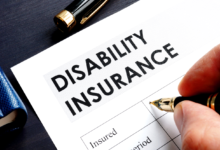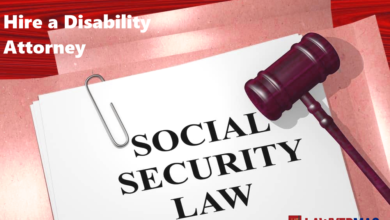ERISA Disability Benefits Applications: 7 Mistakes to Avoid

ERISA disability benefits provide a crucial safety net for individuals facing challenges due to a disability. However, navigating the application process can be complex, and certain mistakes may jeopardize the chances of receiving these essential benefits. In this article, we will delve deeper into the seven common mistakes applicants often make and discuss why avoiding them is crucial for a successful ERISA disability benefits application.
Understanding ERISA Disability Benefits
Before we explore the mistakes, let’s revisit the fundamentals. The Employee Retirement Income Security Act (ERISA) governs disability benefits, ensuring eligible individuals receive financial assistance when unable to work due to a disability. ERISA provides a structured framework for administering and regulating disability benefits, offering a safety net for employees facing unforeseen health challenges.
Read More: What is Disability Insurance, and How Does It Work?[Ultimate Guide 2023]
Common Mistakes in ERISA Disability Benefit Applications
Lack of Medical Evidence
Elaboration: A significant mistake applicants make is not providing enough medical documentation. The success of an ERISA disability benefits application heavily relies on robust medical evidence that clearly demonstrates the severity of the disability.
Solution: Applicants should ensure their medical records include detailed reports, assessments, and any relevant documentation illustrating the impact of the disability on their ability to work. This evidence is crucial in convincing adjudicators of the legitimacy and severity of the disability.
Incomplete or Inaccurate Information
Elaboration: Another common pitfall is the submission of incomplete or inaccurate information. This oversight can lead to delays or denials, emphasizing the importance of thorough and accurate completion of all application forms.
Solution: To avoid this mistake, applicants should meticulously fill out all required forms, double-checking for any missing information or errors. Providing a comprehensive and accurate account of their medical condition and work history enhances the credibility of the application.
Missed Deadlines
Elaboration: Strict deadlines govern ERISA disability benefit applications. Missing these deadlines can result in automatic denial. It’s crucial to understand and adhere to all specified timelines throughout the application process.
Solution: Applicants should create a detailed timeline outlining every critical deadline, from the initial application submission to any potential appeals. This proactive approach ensures that no deadlines are overlooked, safeguarding the application from unnecessary complications.
Failing to Understand the Definition of Disability
Elaboration: Applicants often make the mistake of not fully comprehending the definition of disability under ERISA. Understanding the criteria for disability is paramount to presenting a compelling case.
Solution: To avoid this error, individuals should thoroughly review and understand the specific criteria outlined in ERISA for determining disability. Clearly articulating how their medical condition meets these criteria strengthens the application and aligns it with the legal requirements.
Not Seeking Legal Advice When Needed
Elaboration: Legal guidance is often necessary, especially when navigating complex legal frameworks like ERISA. Failing to seek professional advice may result in oversight and potential pitfalls during the application process.
Solution: Applicants should consider consulting with legal professionals specializing in ERISA disability benefits. Legal guidance provides valuable insights into the nuances of the application process, ensuring that applicants are well-informed and make decisions aligned with their best interests.
Seven Mistakes to Avoid
Mistake 1: Insufficient Medical Documentation
Elaboration: Insufficient medical evidence weakens the application. Include comprehensive records, medical reports, and assessments to paint a clear picture of the disability’s impact.
Solution: Applicants should compile a thorough set of medical records, ensuring they encompass all relevant details. These records should vividly illustrate the severity and ongoing impact of the disability on the individual’s ability to work.
Mistake 2: Providing Incomplete Information
Elaboration: Ensure all application forms are complete and accurate. Missing information can lead to delays or denials.
Solution: Thoroughly review each form, providing detailed and accurate information. Applicants should cross-check their responses to avoid overlooking any essential details requested in the application.
Mistake 3: Missing Application Deadlines
Elaboration: Adhere to all deadlines to avoid automatic denial. Keep a meticulous timeline to stay on track throughout the application process.
Solution: Applicants should create a comprehensive timeline that not only highlights application submission deadlines but also incorporates any subsequent deadlines for additional documentation or potential appeals. This proactive approach minimizes the risk of missing critical timelines.
Mistake 4: Misinterpreting the Definition of Disability
Elaboration: Fully grasp the definition of disability under ERISA to present a compelling case that aligns with the regulatory criteria.
Solution: Individuals should familiarize themselves with the specific criteria outlined in ERISA for determining disability. They must align their narrative with these criteria when presenting their case, ensuring clarity and adherence to legal requirements.
Mistake 5: Not Understanding ERISA Regulations
Elaboration: Stay informed about ERISA regulations to navigate the application process successfully. Lack of understanding may lead to mistakes that jeopardize eligibility.
Solution: Applicants should actively seek information on ERISA regulations, ensuring they understand the nuances of the process. This knowledge empowers them to make informed decisions throughout the application journey.
Mistake 6: Overlooking Vocational Evidence
Elaboration: Consider vocational evidence to strengthen the case. Highlight how the disability impacts the ability to perform job-related tasks.
Solution: Applicants should not only focus on medical evidence but also emphasize how their disability affects their ability to engage in gainful employment. Including vocational evidence provides a comprehensive view of the impact on daily work-related activities.
Mistake 7: Neglecting Legal Guidance
Elaboration: Legal guidance is invaluable. Consult with legal professionals to ensure a thorough understanding of the legal aspects of the application process.
Solution: Seeking legal advice from professionals experienced in ERISA disability benefits is crucial. These experts can guide applicants through the complexities of the legal framework, ensuring a well-informed and strategic approach to the application process.
The Impact of Mistakes on ERISA Disability Applications
Failure to address these mistakes can have significant consequences. Delays in processing, increased chances of denial, and potential legal implications underscore the importance of a meticulous and informed approach to the application process.
Tips for a Successful ERISA Disability Benefits Application
Thoroughly Review the Criteria
Before starting the application, carefully review the eligibility criteria to ensure that all requirements are met.
Seek Professional Advice
Consider consulting with legal and medical professionals to navigate the complexities of the ERISA application process successfully.
Gather Comprehensive Medical Evidence
Compile a comprehensive set of medical records and evidence that clearly demonstrates the impact of the disability on daily life and work.
Understand and Adhere to Deadlines
Create a timeline that outlines all relevant deadlines and milestones to ensure a timely and efficient application process.
Clearly Communicate the Impact of the Disability
Articulate the profound impact of the disability on the ability to work and perform daily activities clearly and compellingly.
Be Aware of Vocational Evidence Requirements
Highlight vocational evidence to provide a holistic view of how the disability affects the ability to engage in gainful employment.
Conclusion
In conclusion, successfully navigating the ERISA disability benefits application process requires a proactive and informed approach. By avoiding the seven common mistakes outlined in this article and following the tips provided, applicants can enhance their chances of a successful outcome. Remember, seeking professional guidance and thoroughly understanding the intricacies of the process are key to securing the support needed during challenging times.
Frequently Asked Questions
Q: Can I apply for ERISA disability benefits on my own, or do I need legal assistance?
While you can apply on your own, seeking legal advice can significantly improve your chances of success and ensure you navigate the process correctly.
Q: What types of medical evidence should I include in my application?
A: Include comprehensive medical records, reports, and assessments that clearly illustrate the severity and impact of your disability.
Q: How long does it typically take for ERISA disability benefits to be approved?
A: The timeline varies, but a thorough and well-documented application can expedite the process. Delays may occur if deadlines are not met.
Q: Are vocational evidence and medical evidence equally important in the application process?
A: Both are crucial. Vocational evidence provides insight into how the disability affects your ability to perform job-related tasks, complementing medical evidence.
Q: Can I appeal a denial of ERISA disability benefits?
A: Yes, you have the right to appeal. Seek legal guidance to strengthen your case during the appeals process.


